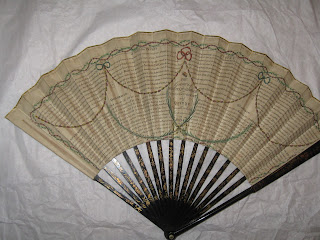From newspaper advertisements in the early 1780s, we learn that "Bob Short" originally published a card with "twelve short standing rules for short memories at the game of whist." (see for example, The Morning Herald and Daily Advertiser of January 31, 1781). I have located no such cards.
He followed this effort with unremarkable abridgements of Hoyle's treatises on whist and quadrille. More charming than the books are their newspaper advertisements. The earliest I have found for the whist chapbook is from Parker's General Advertiser and Morning Intelligencer of February 5, 1783, pictured below, at left. Note the nonsensical claim that the book is "the ninety-ninth edition." Similar advertisements appear through the late 1780s, but if such a book actually was published, no copies survive.
 |  |
1783 advertisement (click to enlarge) | 1791 advertisement (click to enlarge) |
By late 1791, "Short" advertises (above right) the same book priced at 6d., rather than 3d. as in the earlier advertisements, along with a large print issue priced at 1s. He touts the book as "Bob Short's Christmas Box for grown masters and misses" and notes, as we are accustomed to seeing in Hoyle advertisements, "none are genuine which are not signed with the author's name, profession, and place of abode." (The World, December 15, 1791)
The earliest surviving copy, not autographed, is perhaps that advertised in 1791:
Hoyle Abridged: Or Short Rules for Short Memories at the Game of Whist. With the Laws of the Game, &c. Adapted either for the Head or Pocket. By Bob Short. Printed for the Benefit of Families to Prevent Scolding: And Sold by the Author, at Baker's Coffee-house, Exchange Alley...1791. [Price 6d.]"Short Rules for Short Memories" by "Bob Short" is too precious a formualation, and in fact Bob Short is a pseudonym for the London stockbroker Robert Withy. Withy advertised his brokerage services in the 1791 edition, directing the public to Baker's Coffee House. His identity is confirmed in a speech delivered to the Eccentrics' Society of which he was a member, published as An Invocation to Edward Quin by John Gale Jones. (Bodliean Libary, shelf mark G.Pamph. 1386(1))
Withy followed up the whist chapbook with a work on quadrille, which was first published in 1793:
Hoyle Abridged, Part II. Or, Short Rules for Playing the Game of Quadrille; With the Laws of the Game, &c. By Bob Short, Author of Short Rules for Whist. London: Printed for, and sold by the Author, at Baker's Coffee-house, Exchange Alley...1793. [Price Sixpence.]The work begins with a note to the public:
The great demand for my "Short Rules for Whist," seven thousand having been sold in twelve months, has flattered me so much, that I cannot resist the solicitation of many friends to publish Short Rules at the Game of Quadrille, which I trust will also be found useful and conventient both to the proficient and learner. Bob Short.The first advertisement for Quadrille, from The Morning Chronicle of January 1, 1793 claims only 5000 copies of Whist had been sold. It is hard to know which number, if either, to believe.
Eighteenth century copies of Withy's works are scarce. According to ESTC, Whist survives in but two copies of the 1791 edition, and one each of 1792, 1793, 1794, and 1795. The University of Nevada Las Vegas has a copy of a 1793 German translation. Two copies of the 1793 edition of Quadrille are extant.
 |
| early 19th century by Freeman (click to enlarge) |
My earliest copy, pictured at left, is undated. It bears the imprint "Printed by J. Freeman" who's printing activity I cannot date. Nor can I identify the printed text on the marbeled paper wrapper. The paper, pictured below, bears a watermark "Turner's" and a date 1806, suggesting an approximate date for the book.
 |
| Watermark from paper used by Freeman (click to enlarge) |
 |
| Backgammon, Bob Short, Jun. (1818?) (click to enlarge) |
 |
| Whist, Wright (1822) (click to enlarge) |
There is no reason to believe that this list represents even a significant portion of those actually published. The survival rate of chapbooks is extremely low. The proliferation of 19c variants convinces me to stop my research at 1800. Even the 18th century printing history is rendered mysterious by the card with "twelve short rules" and the eight year gap between the first advertisement and the first surviving copy.




























